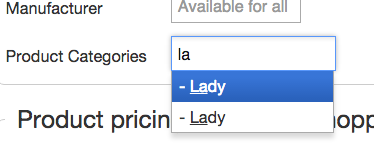Why hidden configuration settings ?
Some configurations are barely used, or are only for experts, or must be set while updating the tables.
The VirtueMart configuration has its defaults delivered in the virtuemart.cfg-dist. The configuration loader tries first to load the configuration from the virtuemart_configs table. If not accessible it tries to load the virtuemart.cfg file, which is not in the installation package and therefore not overwritten. If there is no virtuemart.cfg available, the virtuemart.cfg-dist is copied as virtuemart.cfg and loaded.
So if you want to use an option for the installation like dblayoutstrict, dbpsdescsize, dbnamesize. Or an rarely used pro option which has no GUI, then you just need to get this into your configuration.
How to use a hidden configuration parameter?
- open the virtuemart.cfg (at /administrator/components/com_virtuemart/virtuemart.cfg)
- Preset any value used in VmConfig::get('myvalue','default').
In the example, change the line myvalue=default to myvalue=mydefaultvalue - Save the file
- Enter the virtuemart backend:
- For VirtueMart 3: store the VirtueMart configuration once. The configuration file is load first and overwritten by the form of the configuration view and you should keep all settings.
- For VirtueMart 2: you must use the button in tools "udpate config by file". Be aware that you loose your settings then.
Of course, you could theoretically set all config defaults into the virtuemart.cfg (interesting for retailers actually).
List of the hidden settings
- dblayoutstrict
- dbpsdescsize
- dbnamesize
- updelcols
// Default is to not drop abadoned columns from tables on VM update, 1 to delete columns on VM update - updEngine
- roundindig
- seo_full
- keysize
- maskIP
- reuseorders
- randOrderNr
- randOrderPw
- full_catname_tree
- pricesbyCurrency
- vm_num_ratings_show
- product.published = 0
// 1 to set new product publish to "yes" - sql_weekmode
- show_subcat_products
- ChangeShopperDeleteCart = 1
// When allowing admin to change shopper - changing shopper will delete the cart - helps prevent accidental items in cart on switching shopper, 0 = dont delete cart. - ChangeShopperAlsoUseAdminShoppergroups=0
// When allowing admin to change shopper - 1 = admin's shopper groups will also be used - ChangeShopperExcludeShoppergroups
// Default is show all shoppers, array:0|1 Dont show these shoppergroups in select shopper listing - hideEmptyCustomfields
// Don't show customfields that do not have values - order_item_ordering
// Sort order items in order prints and invoices by the sequence they were added to cart, =order_item_sku will sort by order item SKU - order_item_ordering_dir
// Sorted order items can be =ASC or =DESC - reuseorders=1
// Default enabled, 0 = dont reuse orders - a new order will be created even when a payment fails and another is attempted for the "same" cart - populateEmptyST=1
// Default is to populate an empty ShipTo address BillTo details when editing the ST address = 0 = dont do this. - alwaysLoadStoredShopperAddress=0
// When a shopper's cart is loaded from a previous visit use the address saved in the cart, 1= Use address from Shoppers userinfo - shoppergroupDontSaveCart
// Non completed cart data will be stored for reuse on logout, =NN Dont store for shoppers in this shoppergroup - useful for certain admins or shoppers - revenue_report_statuses
// Default is C and S - revenue report order status selections, the default selection can be changed e.g. array:B|C|E|G|H|J|S - unique_customfield_titles=1
// Customfield titles must be unique - can cause problems for some stores so can be set to be none unique =0
full_catname_tree
It is an option only used in the administration. It allows you to display the full path of the categories in the product. It is a usefull option when there are several categories with the same name.
List of the categories when full_catname_tree=0

List of the categories when full_catname_tree=1

